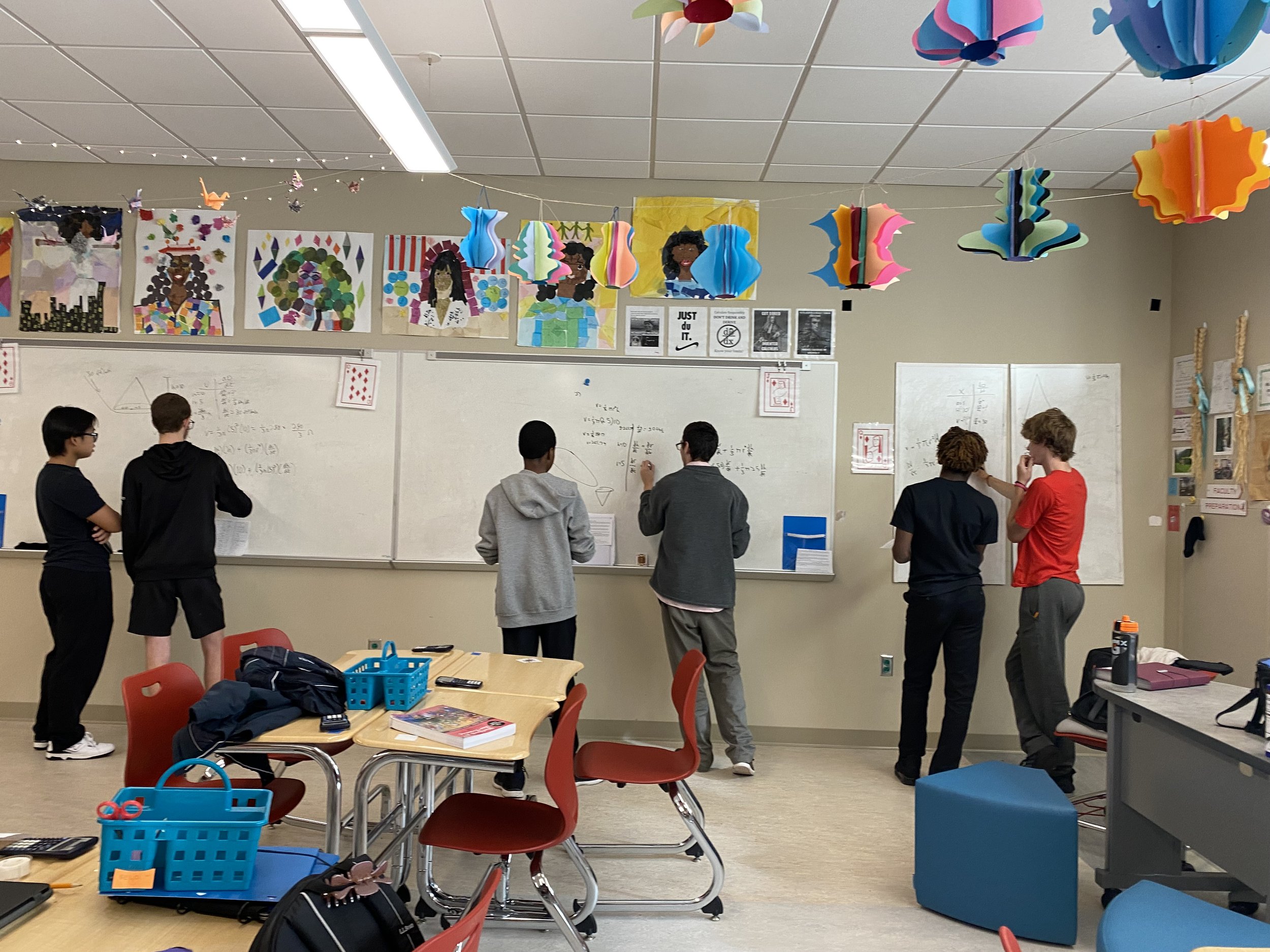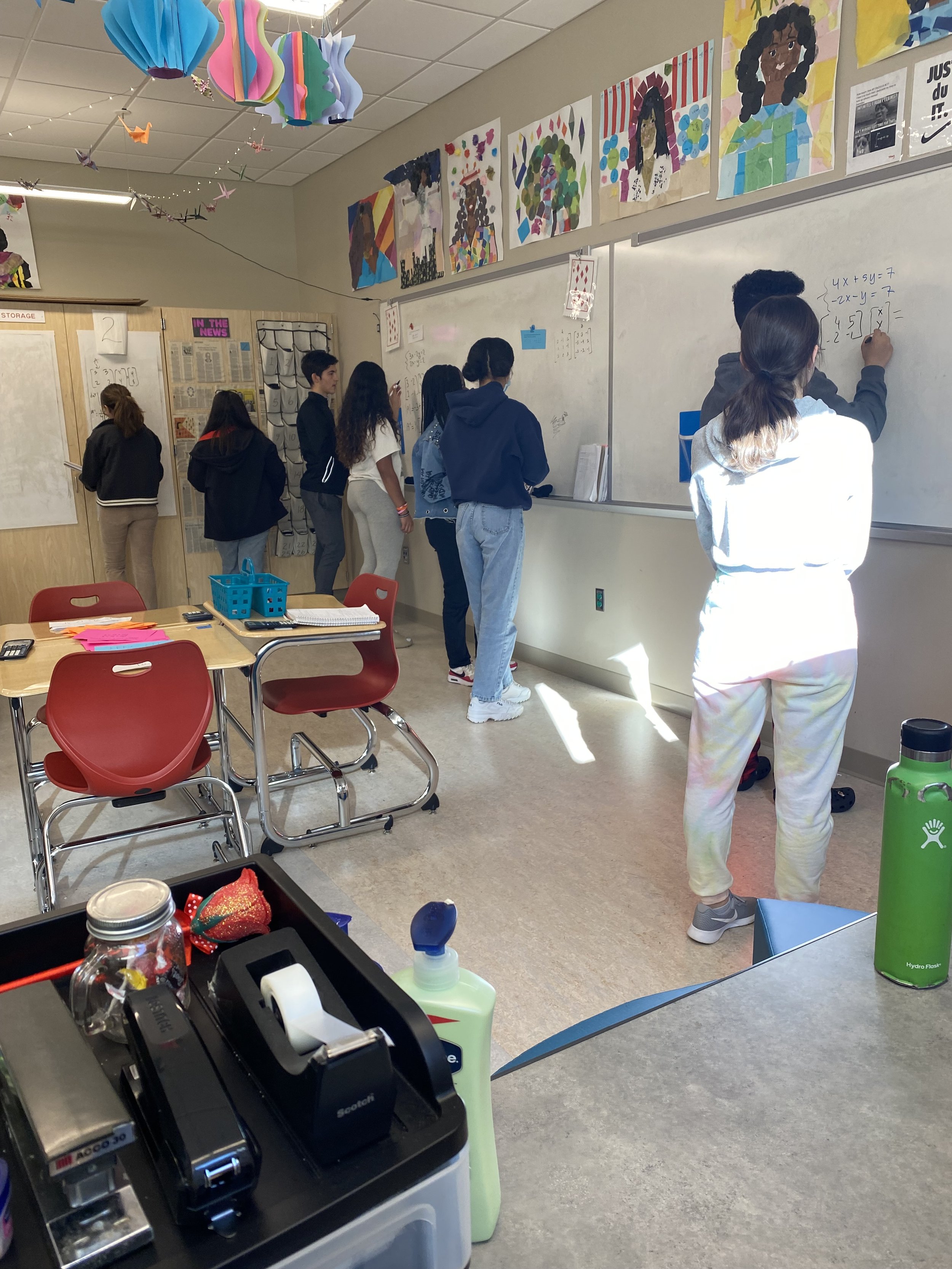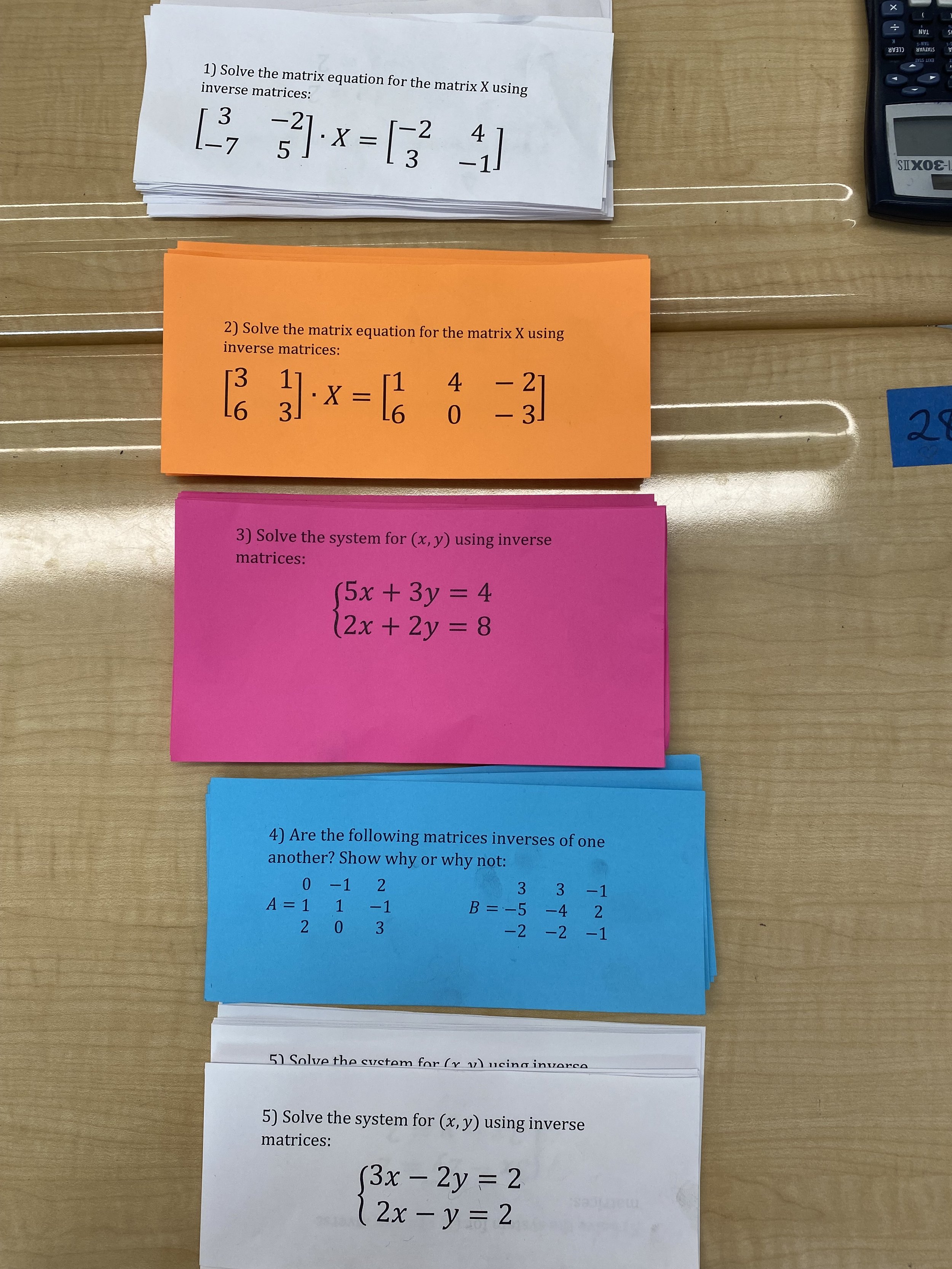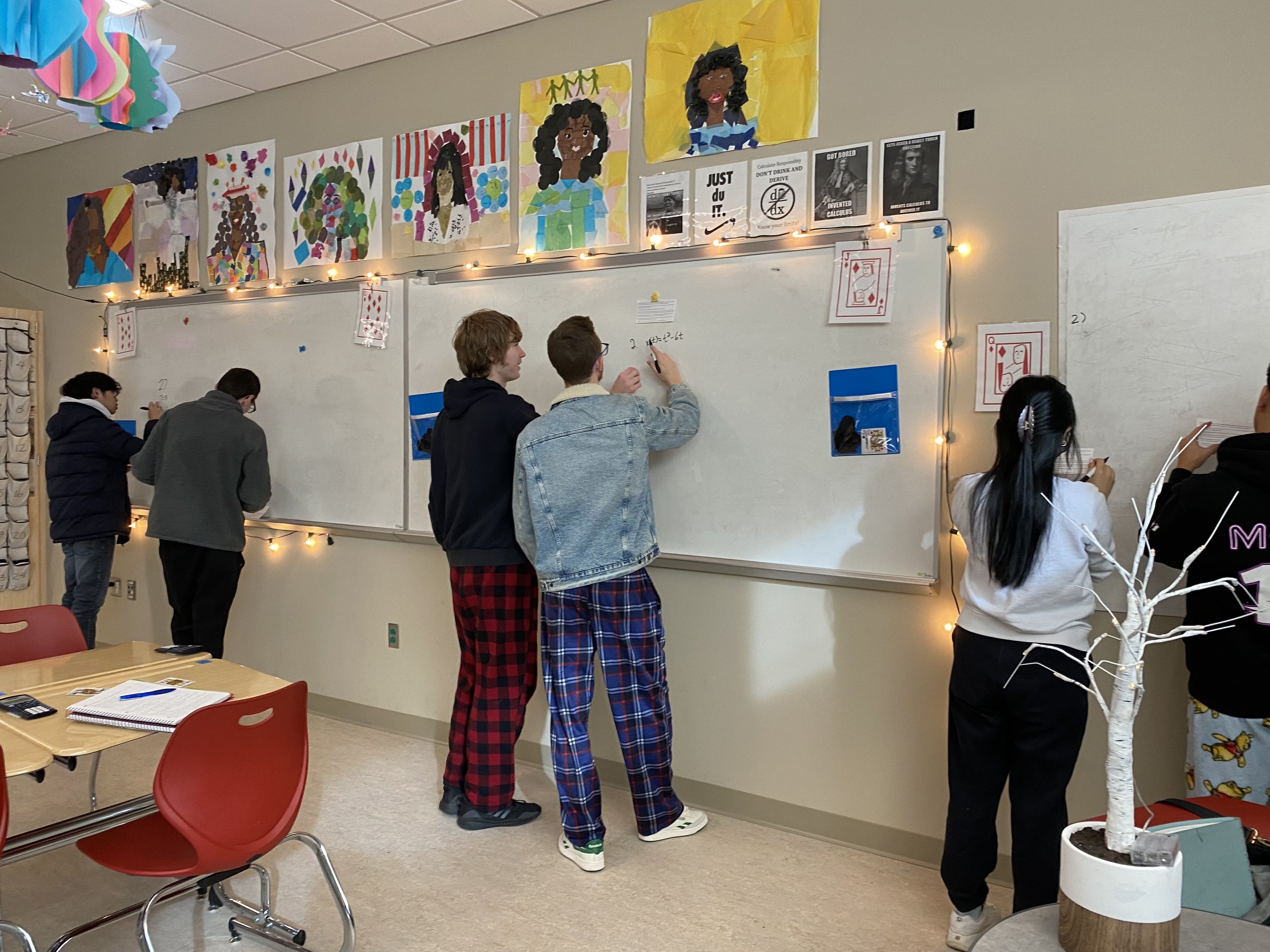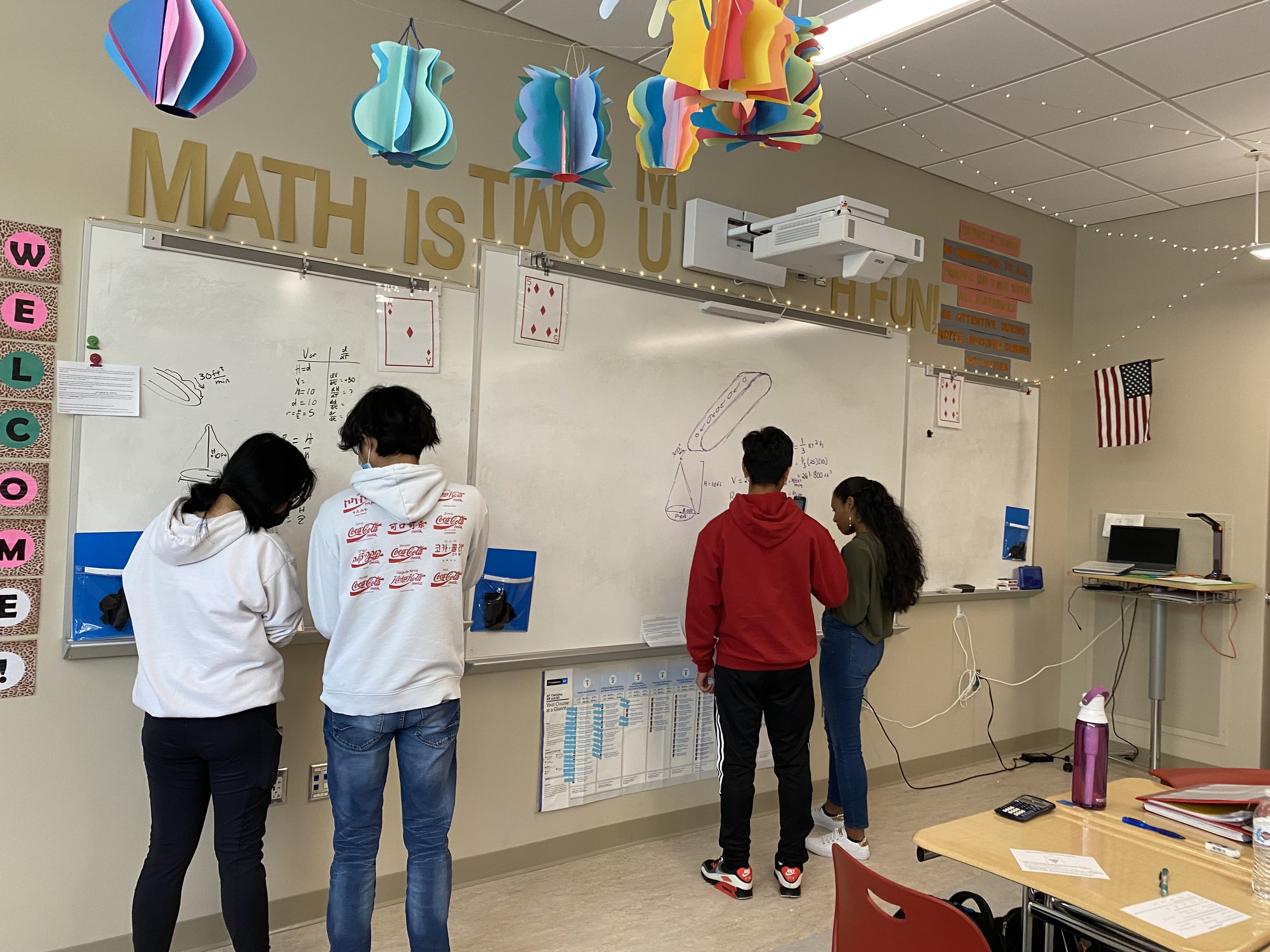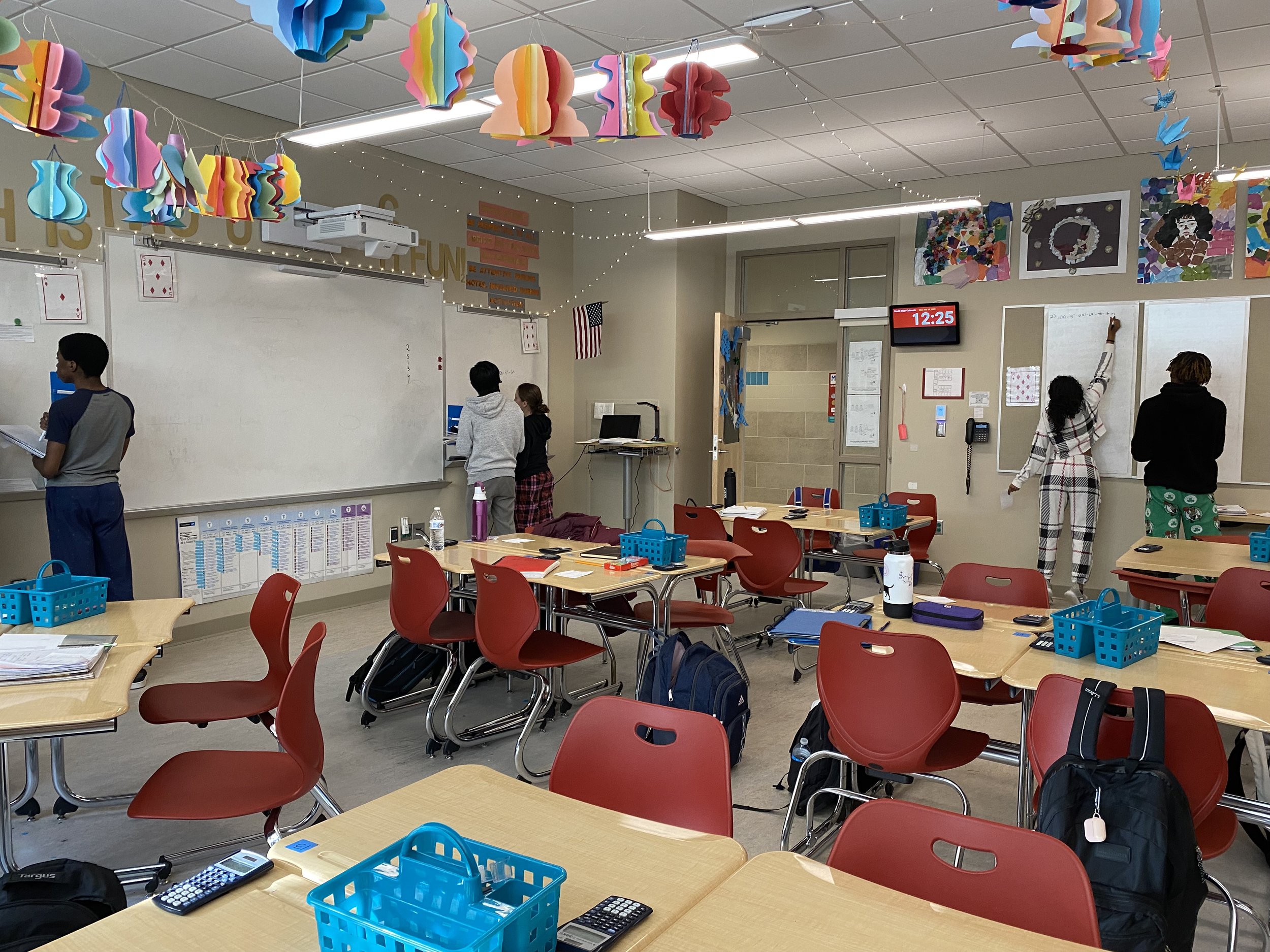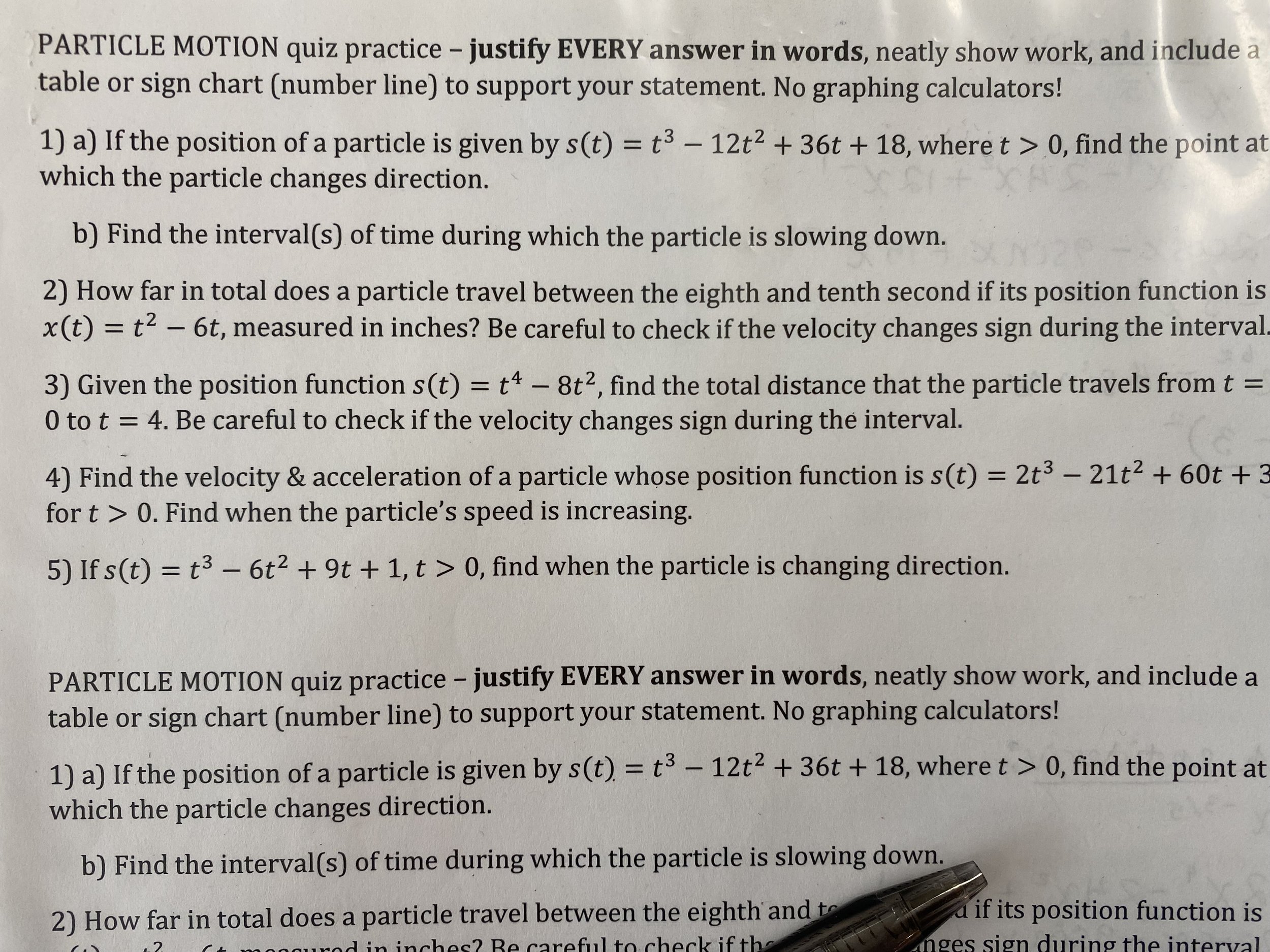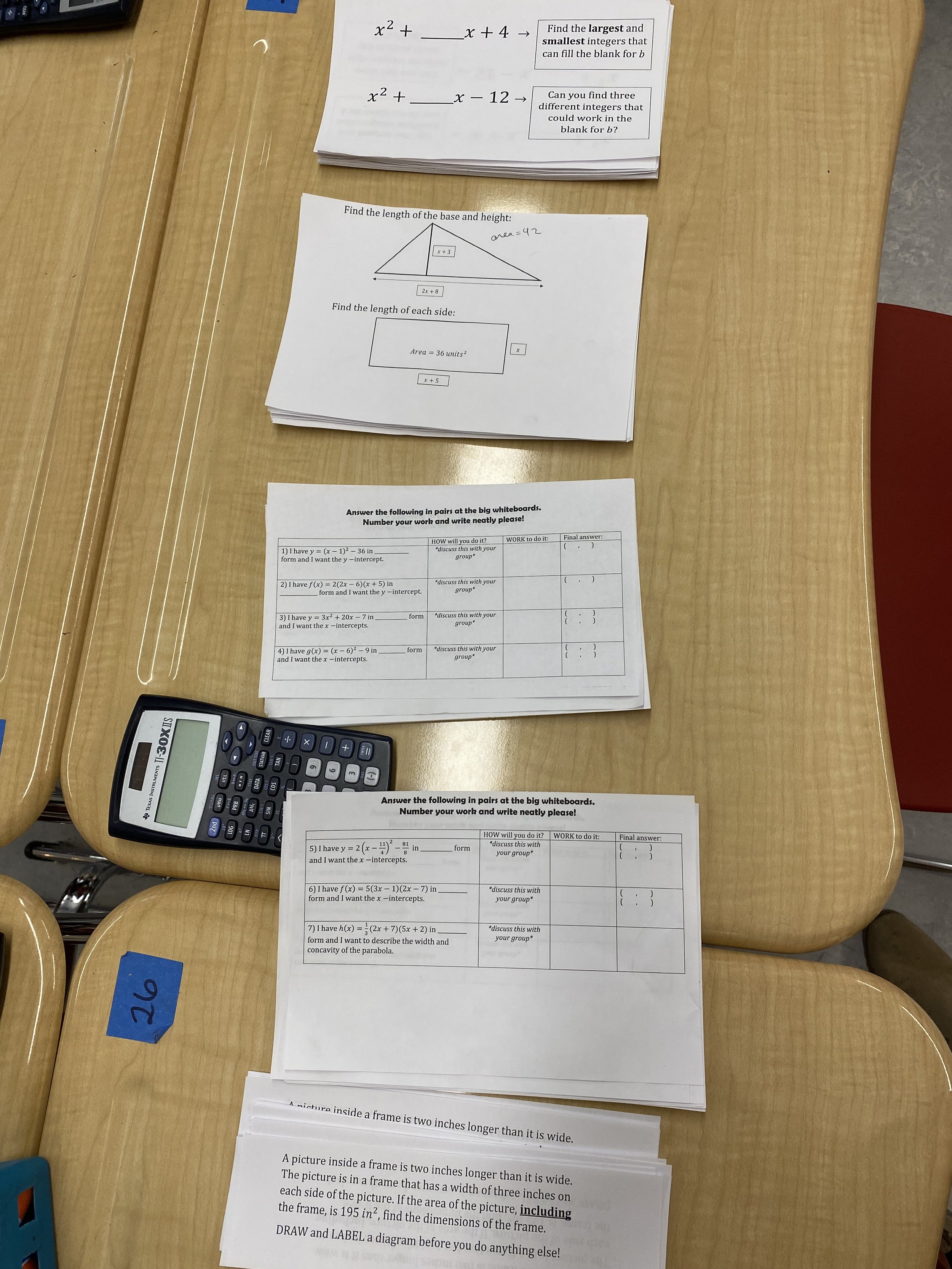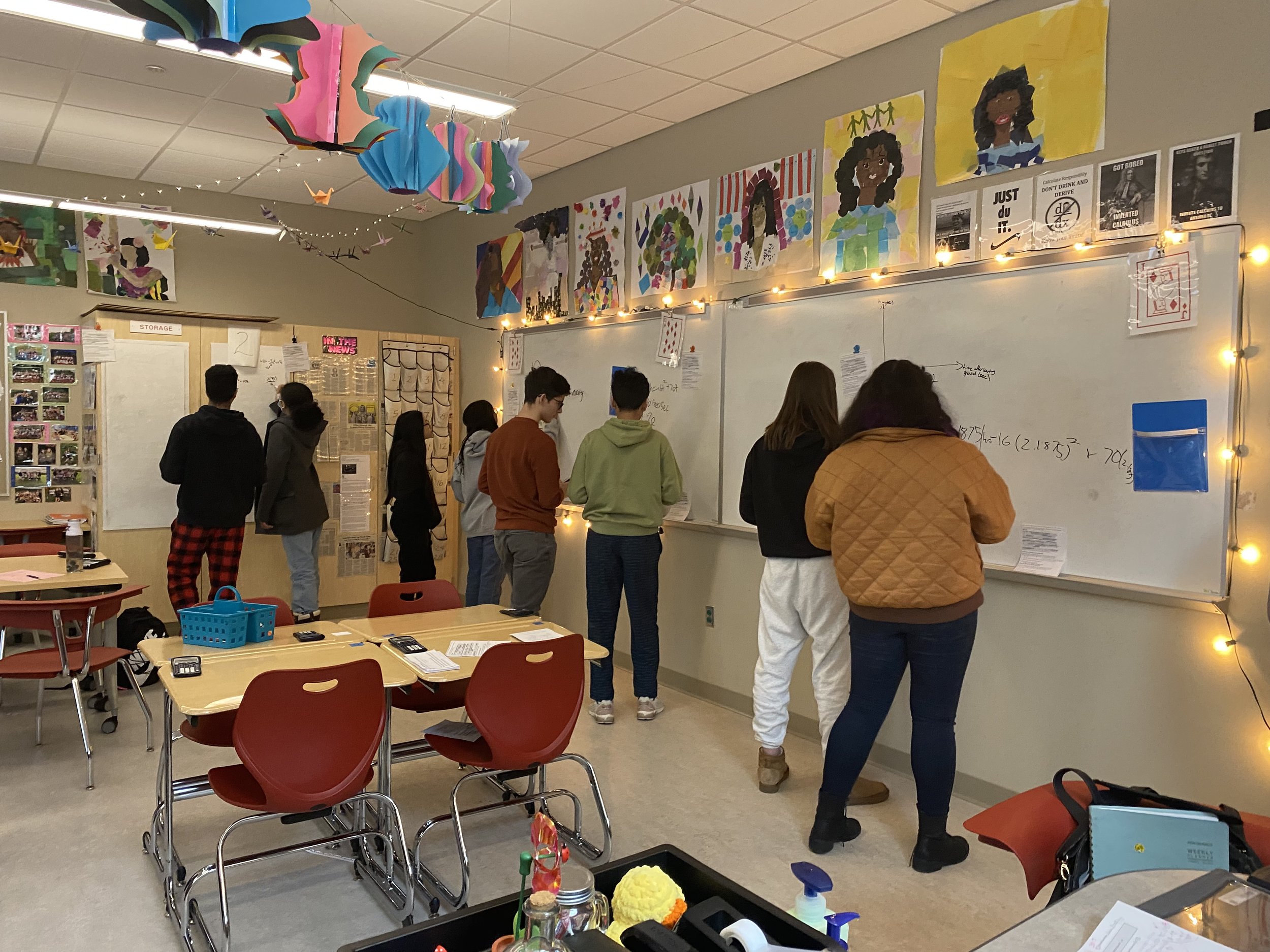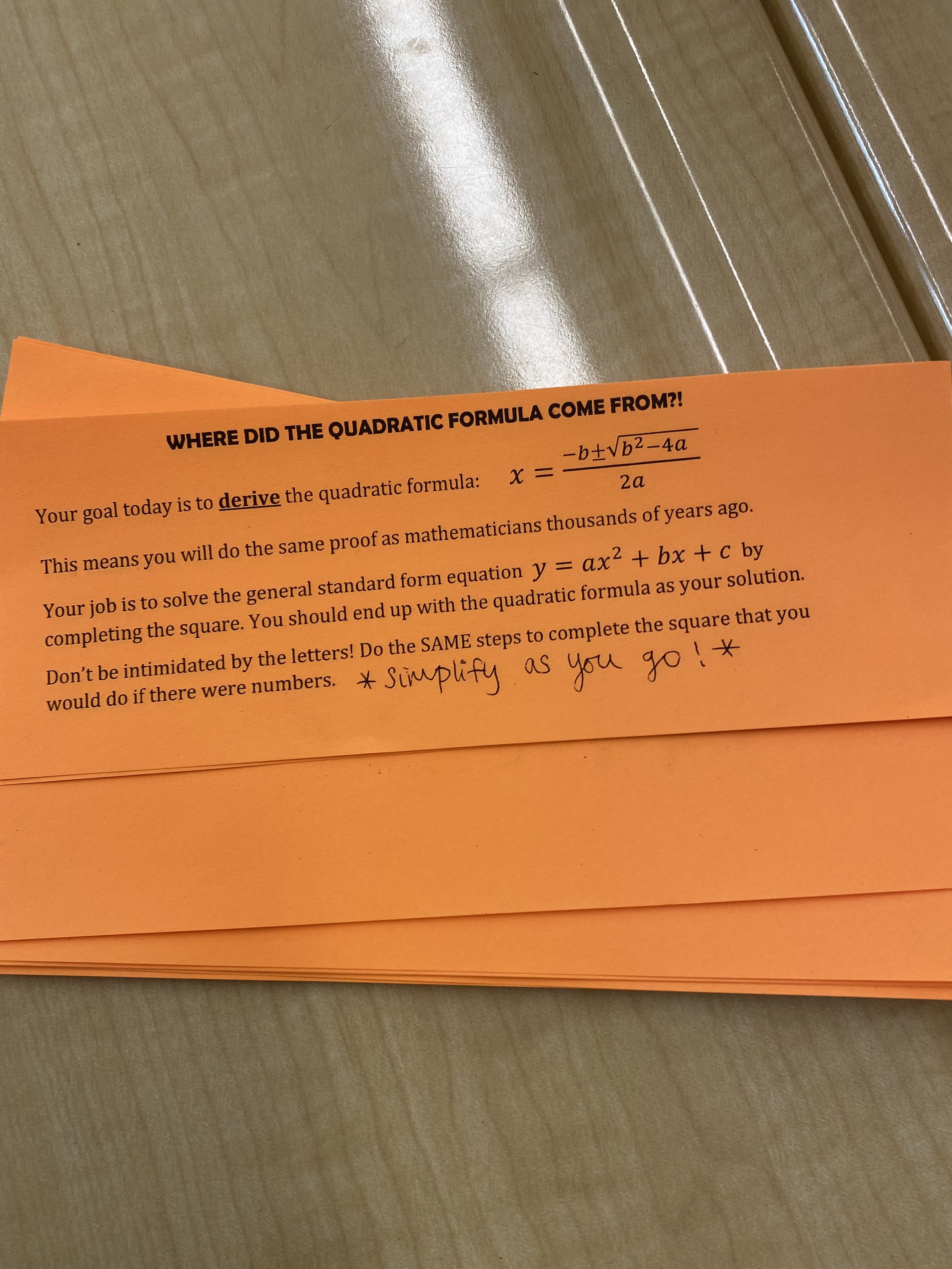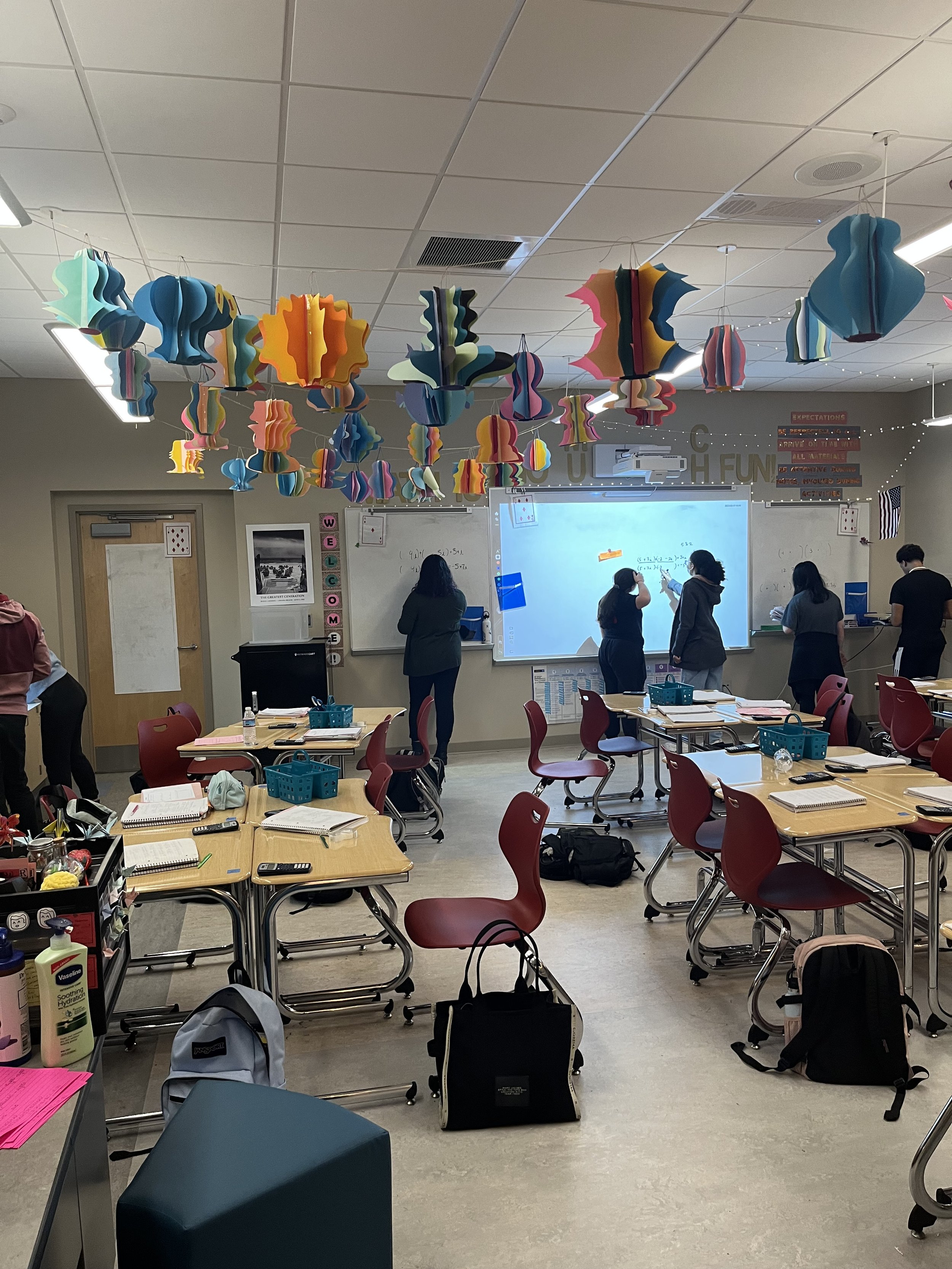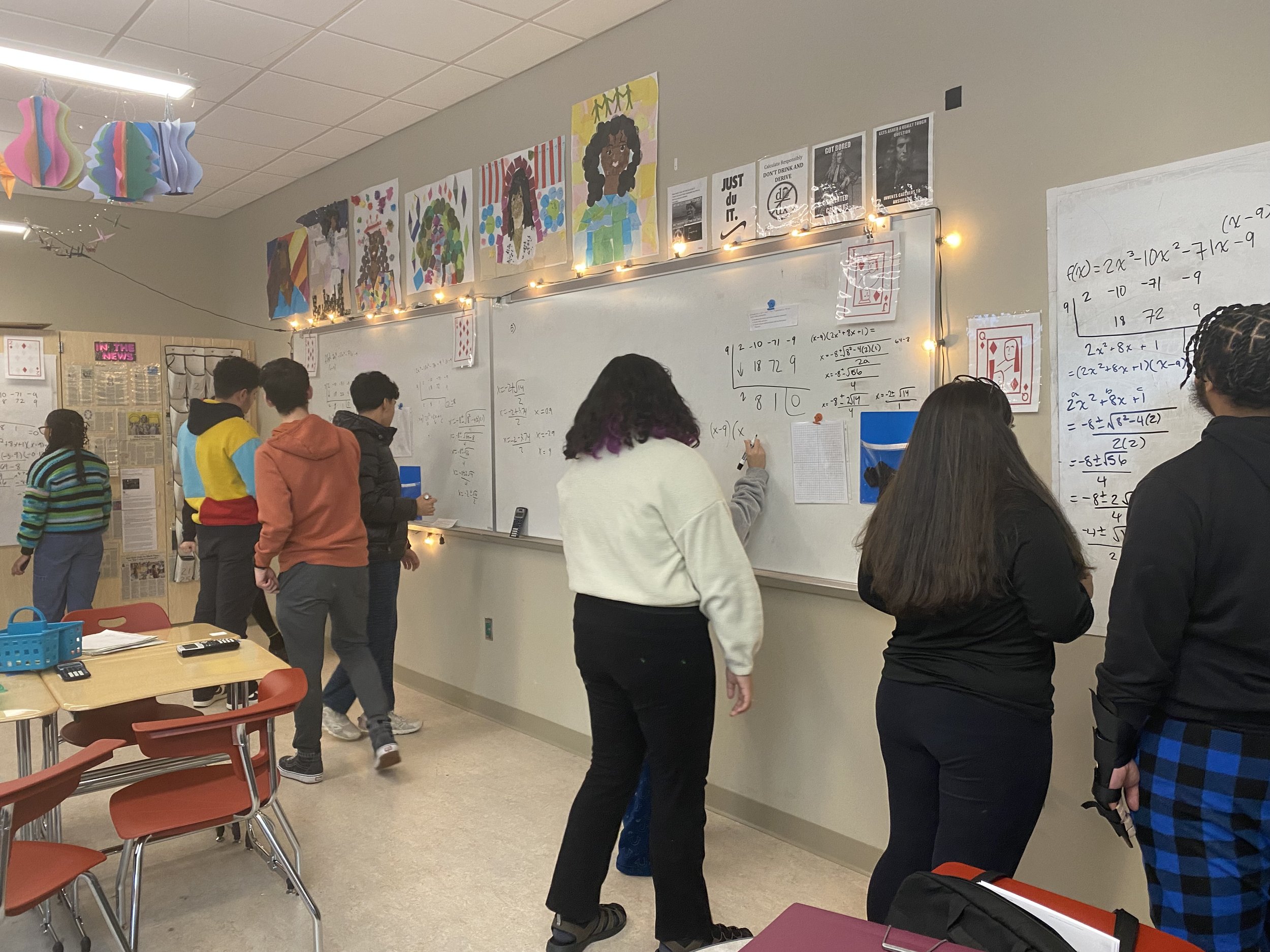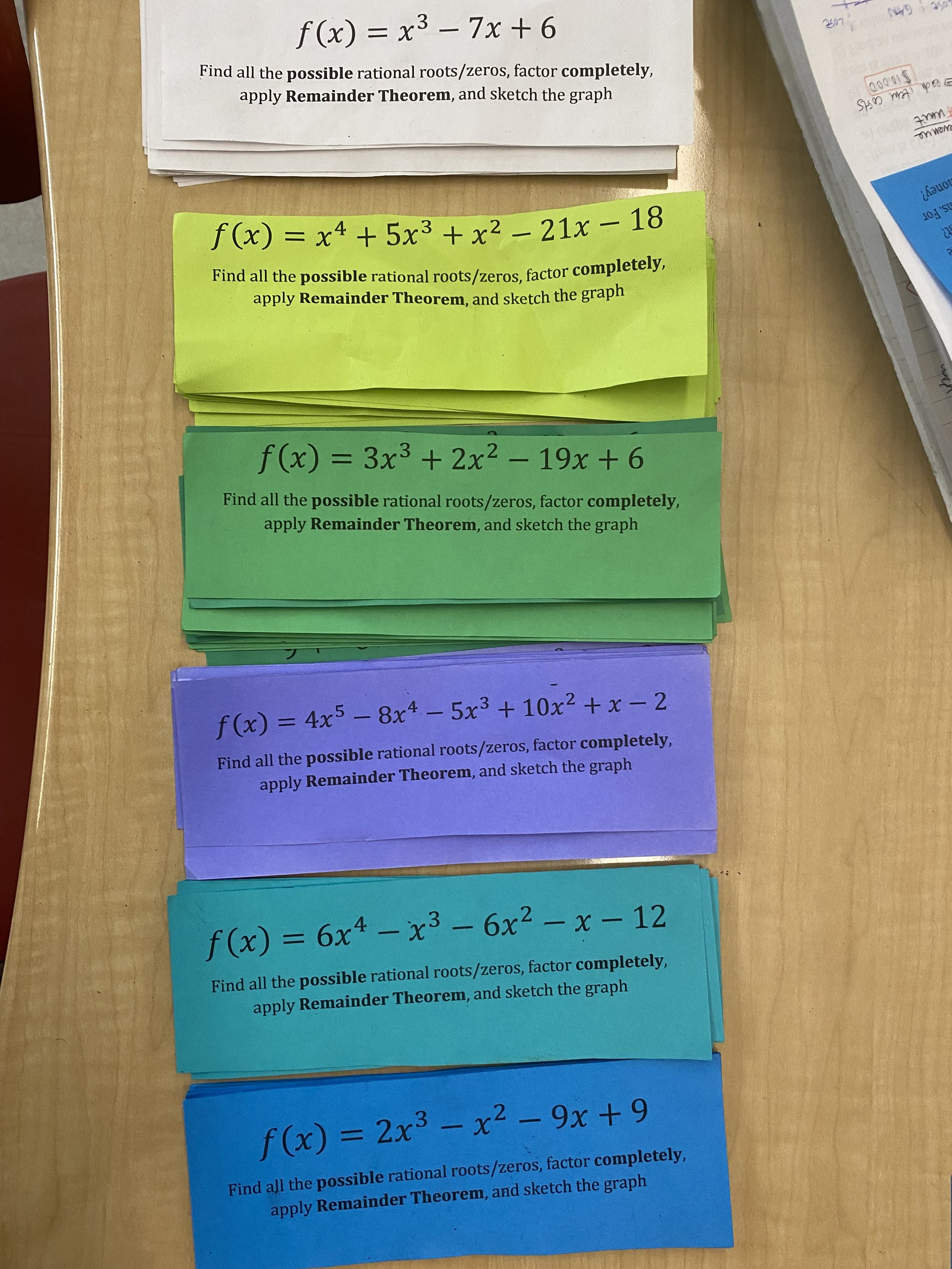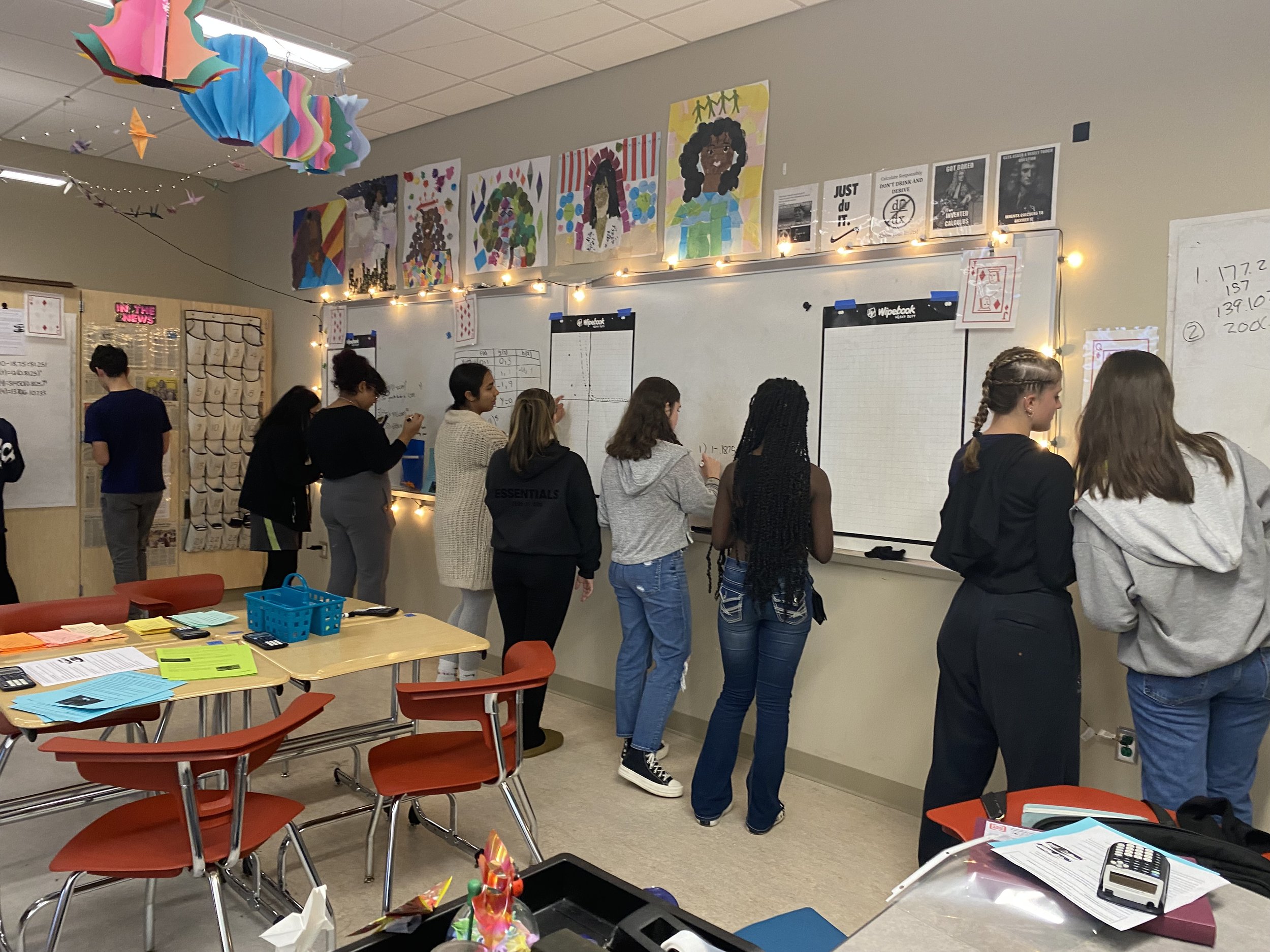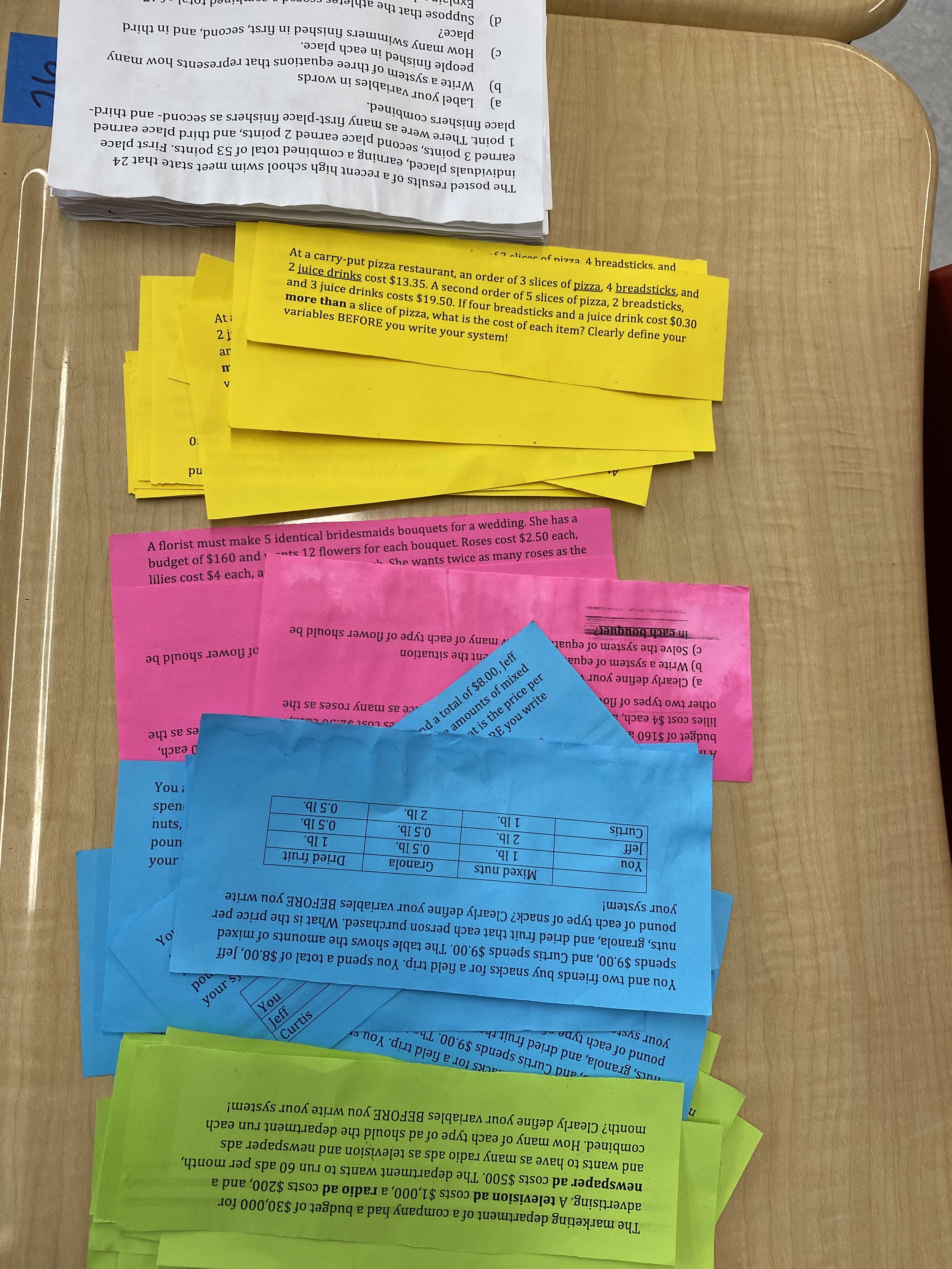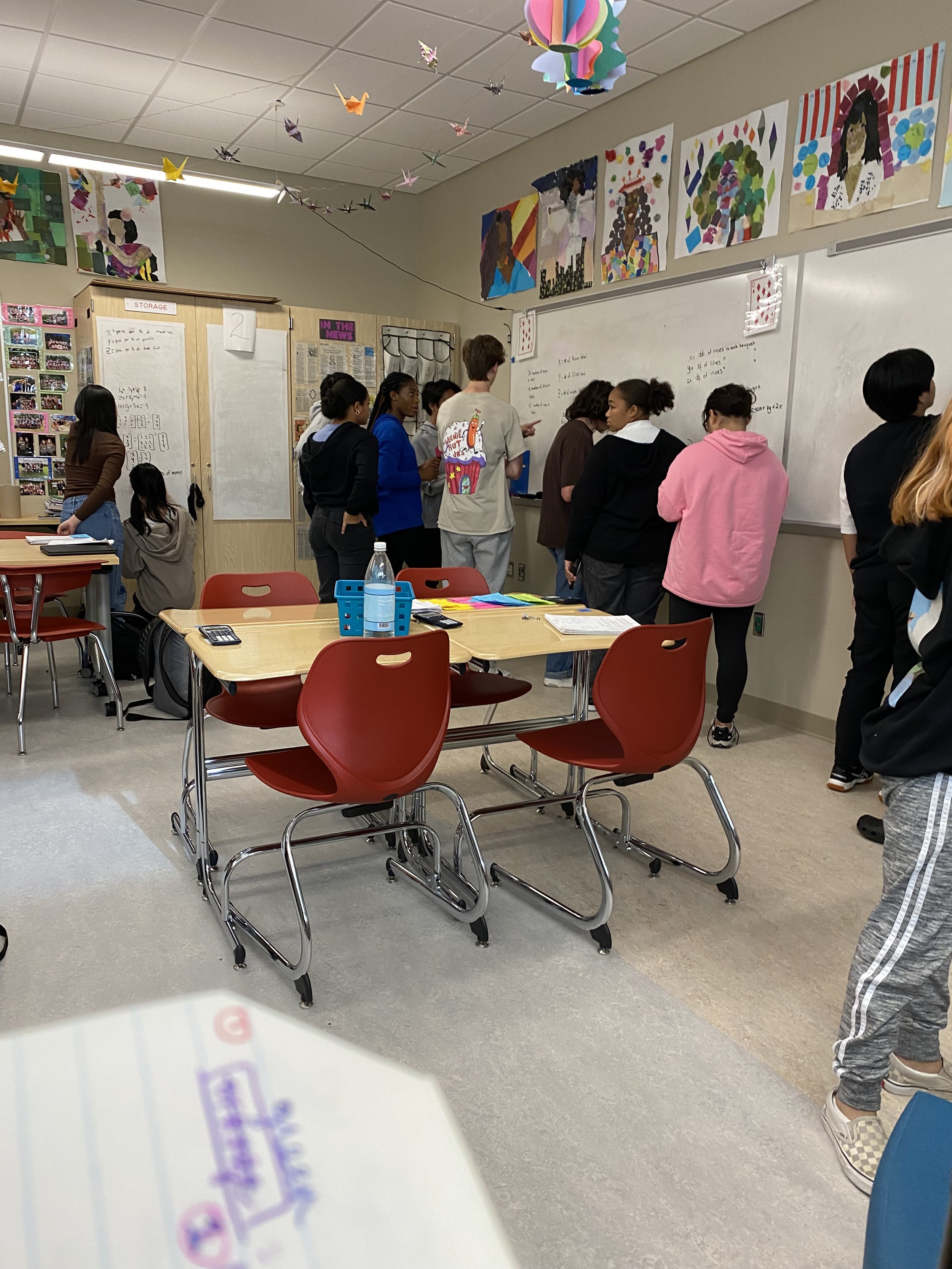
I read the book “Building Thinking Classrooms” by Peter Liljedahl during the summer 0f 2022, and I can truly say it changed the way I think about teaching. Before reading this book, I had already been using individual whiteboards and only answering “keep thinking” questions, but this book opened my mind to so many more ideas and concepts to implement.
I came in several times in the summer of 2022 to convert my classroom to a Thinking Classroom after reading the book “Building Thinking Classrooms” that summer. To get more whiteboard stations, I bought budget-friendly SHOWER BOARD from Lowes (cut into smaller sections) and put duct tape around the edges to give it a clean look and cover sharp edges. Right now, I have 11 stations around the room. Each station is labeled with a laminated playing card and has a whiteboard marker, sock eraser, and MAGNETIC CLIP (link) to hold the current problem students are working on. The main drawback with the shower board is that they’re not magnetic. The real whiteboards that came with my room are magnetic, so those stations have these amazing blue MAGNETIC POUCHES (link) to hold supplies.
As of now (May 2023), after nearly a full near of trying out the 4 Toolkits in this book, I am confidently using the first 2 toolkits and part of the 4th toolkit. I have to say, though, that I have not FULLY implemented a Thinking Classroom model (which would see students at the boards most days). I have students go to the vertical whiteboards 1-2 times per week, but definitely not every day. The days when students are at the boards working through problems at their own pace while I am walking around non-stop managing their work are exhausting but so worth it. My goal this summer is to rework some of my assessments for certain units to begin assessing students for content mastery (more standards based assessments).
READ MY BLOG POST from June 16, 2023 reflecting on my first full year of using BTC!
